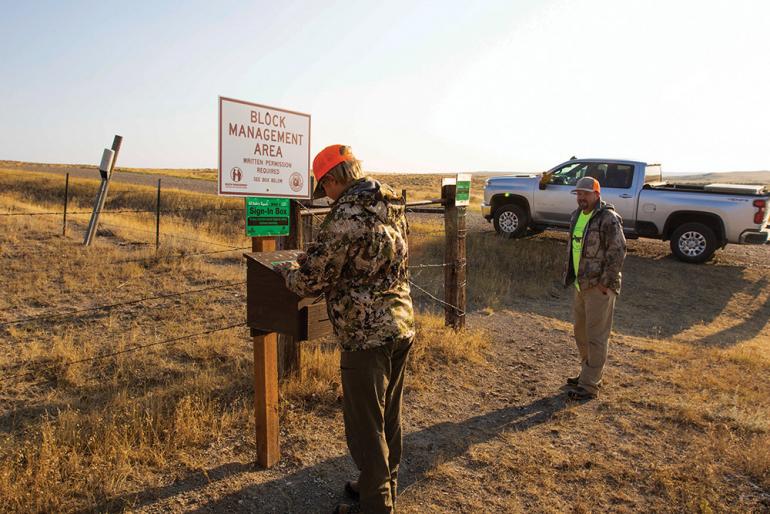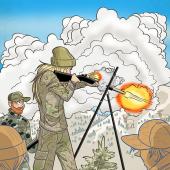Green Box Go
America's best land-access program.
The truck rumbled down the county road through a thick fog on the last day of antelope season. We’d hunted hard the whole week—unsuccessfully. I was 12 and I was exhausted.
“Well there’s a herd,” Mom said, pointing out the window toward an abyss of grassland. Dad slowed to a stop and we brought up our binos. The bodies of six pronghorn appeared faintly in the distance.
“Sure enough,” Dad said. “But it looks like they’re on the wrong side of the fence.” He brought the glasses down and unfolded a map across the steering wheel, the GMC still idling. “No, actually, that’s a BMA,” he exclaimed. “If we get behind that close ridge there, we might be able to sneak ‘em if we stay low.”
Block Management Areas, or BMAs as most folks call them, are parcels of private land open to public access, specifically for hunting. The collaborative program between Fish, Wildlife & Parks and private landowners started in 1985. In 2020, around 1,200 landowners enrolled over seven million acres of Block Management—land that may otherwise be closed to public hunting.
How it works is simple: all BMAs operate under a strict volunteer basis. Landowners sign up to be a part of the program, receive a contract from the regional coordinator outlining compensation, and the public has the right to hunt their land—for free.
Upon enrollment, the landowner gets the choice to list the parcel as a Type 1 or Type 2 BMA, the difference being that permission is still necessary for Type 2. Hunters need to call ahead of time (the landowner, or in some cases FWP) and likely make a reservation. On a Type 1, the hunter simply signs in at a green box somewhere along the property boundary.
On August 15 every year, FWP releases its Hunting Access Guide and maps with details on the state’s BMAs for the coming season. You can order the current edition online or pick up a copy at any FWP office.
The piece of ground the antelope were grazing was a Type 1. All we needed to do was sign in. After jotting down our information, we took off on foot, right from the box. We had topography in our favor, but the low clouds made it difficult to see. The land turned eerie, almost disorienting. We made our way across the naked landscape, hoping to reach a predetermined vantage, sneaking only by feel.
We crested the top of a spur ridge and they came into view in the same swale Mom spotted them in. They were bedding down. My cheek melded to the stock of the .243. I put the crosshairs on the buck’s front shoulder and steadied my breathing. Ready, I waited for Dad’s okay. When he whispered the words, I squeezed. Minutes later, I was notching my first tag.












